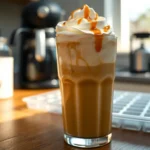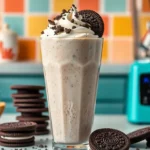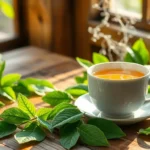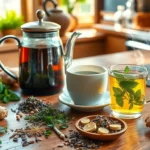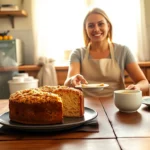We’ve all craved that perfect cup of creamy milk tea but didn’t have boba pearls on hand. The good news? You don’t need those chewy tapioca balls to create an absolutely delicious milk tea that’ll satisfy your cravings. This simplified version delivers all the rich flavors and comforting warmth you love without any specialty ingredients.
Making milk tea at home is surprisingly simple and incredibly rewarding. We’ll show you how to achieve that perfect balance of strong tea and creamy milk that makes this beverage so irresistible. Whether you’re dealing with a late-night craving or just want to skip the boba shop line this approach gives you complete control over sweetness and strength.
The best part? You probably already have everything you need in your kitchen right now. Let’s jump into creating this smooth satisfying drink that proves sometimes the simplest versions are the most satisfying.
Ingredients
Our homemade milk tea recipe requires just a handful of pantry staples that combine to create a rich and satisfying beverage. We’ve organized these ingredients into three categories to make preparation even easier.
For the Tea Base
- 2 cups water
- 3-4 black tea bags (or 2 tablespoons loose black tea)
- 1 cinnamon stick (optional)
- 2-3 whole cardamom pods (optional)
- 1-inch piece fresh ginger, sliced (optional)
For the Milk Mixture
- 1 cup whole milk (or heavy cream for extra richness)
- 1/2 cup evaporated milk
- 2 tablespoons sweetened condensed milk
Optional Sweeteners and Flavorings
- 1-3 tablespoons granulated sugar (adjust to taste)
- 2 tablespoons honey or maple syrup
- 1 teaspoon vanilla extract
- 1/2 teaspoon almond extract
- Pinch of salt to enhance flavors
- Ice cubes for serving cold
Equipment Needed

Making milk tea at home requires minimal equipment that we likely already have in our kitchen. We need a kettle or pot for boiling water to create the perfect temperature for tea extraction. This basic tool ensures we achieve optimal steeping conditions for our black tea.
A tea infuser or tea strainer becomes essential when working with loose tea leaves. We can use this tool to contain the tea while allowing proper water circulation during steeping. Tea bags eliminate the need for additional straining equipment if we prefer that convenience.
Tea bags or loose black tea form the foundation of our milk tea preparation. We recommend having quality black tea on hand for the best flavor development. Loose tea often provides superior taste control compared to pre-packaged options.
Measuring cups and spoons help us achieve consistent results every time we prepare milk tea. Precise measurements ensure the perfect balance between tea strength and milk richness. We find that accuracy in measuring leads to reproducible delicious results.
Sugar or sweetener allows us to customize sweetness levels according to personal preference. We can choose from brown sugar, granulated sugar, honey, or alternative sweeteners. Having measuring spoons dedicated to sweeteners prevents flavor contamination.
Milk options include dairy milk, almond milk, cashew milk, or any preferred non-dairy alternative. We store milk properly to maintain freshness and optimal taste in our final beverage. Different milk types create unique flavor profiles worth experimenting with.
A whisk for mixing ensures smooth integration of all ingredients without lumps or separation. We use this tool to blend milk and tea seamlessly for consistent texture throughout. Proper mixing creates the signature creamy appearance of quality milk tea.
Finally, a glass or cup for serving completes our equipment list for immediate enjoyment. We choose serving vessels that showcase the beautiful color of our finished milk tea. Clear glasses allow us to appreciate the rich caramel hues of our homemade creation.
Instructions
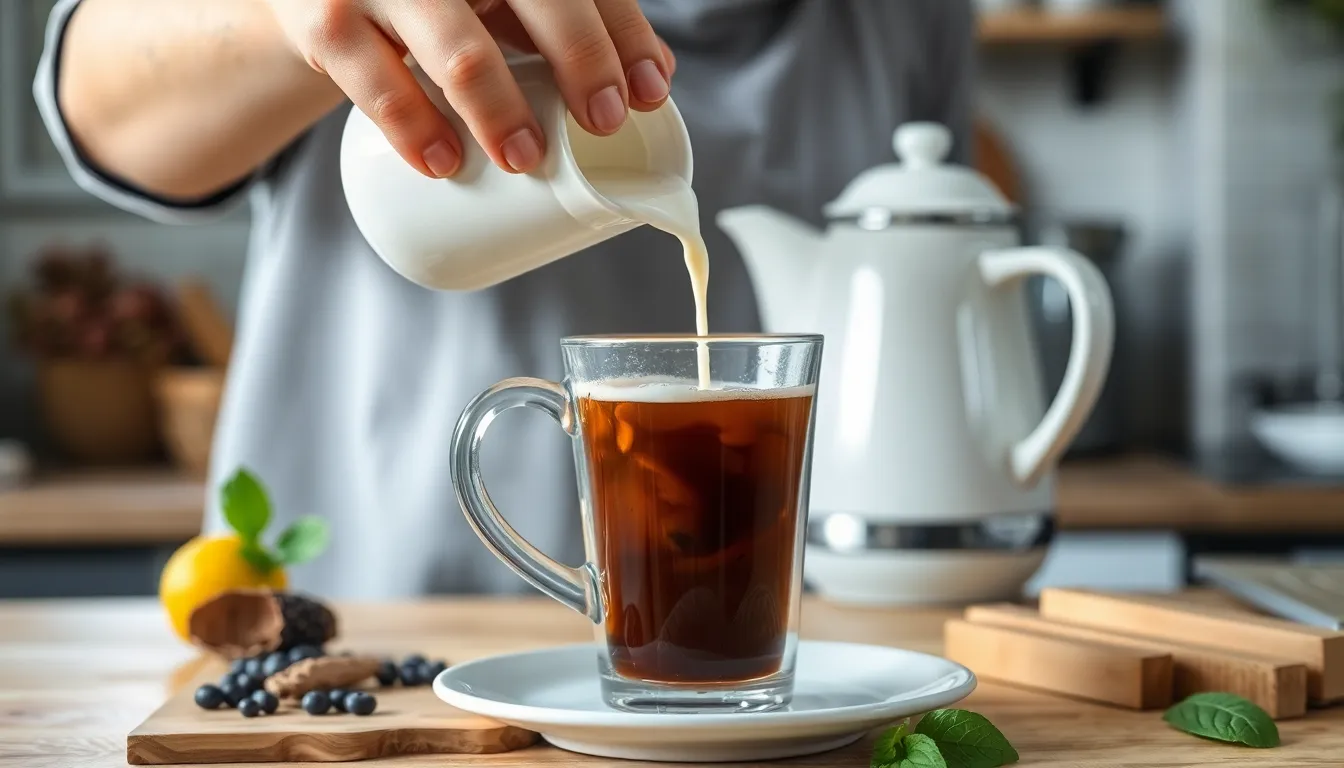
Now we’ll walk through each step to create the perfect cup of milk tea without boba. These simple techniques ensure we achieve the ideal balance of tea strength and creamy richness.
Prep the Tea
We start by bringing fresh water to a rolling boil in our kettle or pot. Once the water reaches a full boil, we add 2 teaspoons of loose black tea or one tea bag directly to the boiling water. The steeping process requires exactly 5 minutes to extract the robust flavor we need for a strong tea base that won’t get lost when mixed with milk.
After steeping, we remove the tea bags or strain out loose leaves immediately. We let the brewed tea cool for approximately 10 minutes at room temperature. This cooling step prevents the tea from becoming overly bitter and ensures optimal flavor when we combine it with our milk mixture.
Heat the Milk
We select our preferred milk type, whether whole milk for richness or almond milk for a lighter alternative. Coconut milk should be avoided as it tends to overpower the delicate tea flavor we’re aiming to preserve.
For a refreshing cold version, we keep the milk chilled in the refrigerator until ready to use. If we prefer a warmer drink, we gently heat the milk in a small saucepan over low heat, being careful not to scald it. The milk should be just warm to the touch, not steaming hot.
Combine Tea and Milk
We pour our cooled tea into a serving cup first, creating the foundation for our drink. Next, we slowly add the milk while stirring gently to create an even blend. The ratio can be adjusted to personal preference, but we typically use equal parts tea and milk for the perfect balance.
Stirring clockwise helps create a smooth, uniform color throughout the mixture. We continue mixing until no streaks of pure tea or milk remain visible in our cup.
Sweeten and Flavor
Brown sugar works exceptionally well as our primary sweetener, dissolving easily and adding depth to the overall taste profile. We add our chosen sweetener gradually, stirring continuously until it completely dissolves into the liquid.
For additional flavor complexity, we can incorporate a few drops of vanilla extract or our preferred flavorings. Each addition should be mixed thoroughly before tasting and adjusting the sweetness or flavor intensity to our liking.
Strain and Serve
If we used loose tea leaves and notice any remaining particles, we strain the mixture through a fine mesh strainer into a clean cup. This final straining step ensures a smooth drinking experience without any gritty texture.
We serve our milk tea either chilled over ice cubes or at room temperature, depending on our preference. For an extra indulgent touch, we can top the drink with a dollop of whipped cream before enjoying our homemade creation.
Directions for Different Milk Tea Variations
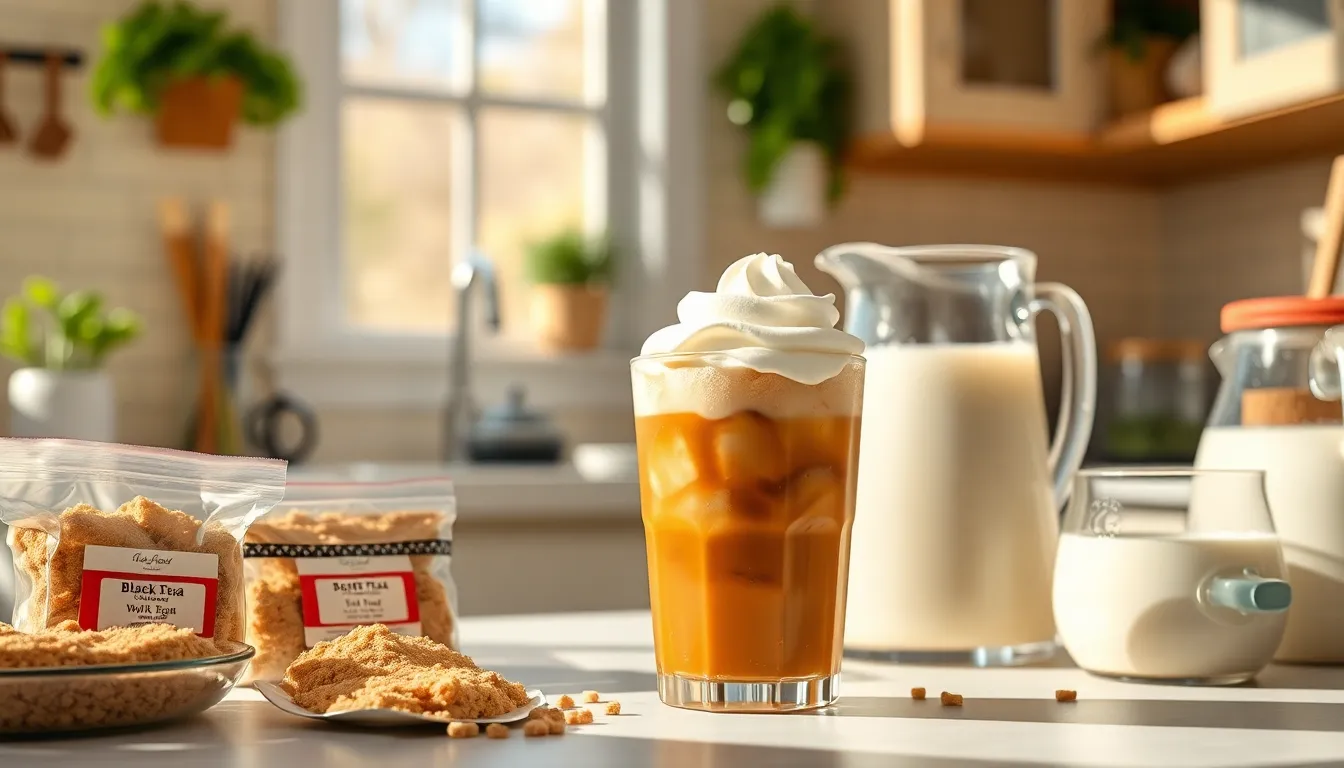
We can create multiple delicious milk tea variations using our basic preparation method. Each variation offers its own unique flavor profile while maintaining the creamy texture we love.
Classic Black Milk Tea
We start by boiling ⅔ cup of water in our kettle or pot. Once the water reaches a rolling boil we add 3 black tea bags and steep for exactly 5 minutes to develop a robust flavor base. After steeping we remove the tea bags and allow the tea to cool to room temperature.
Next we stir in 2 tablespoons of brown sugar while the tea is still slightly warm to ensure complete dissolution. We then gradually pour in 1 ⅓ cups of whole milk followed by ¼ cup of heavy cream for extra richness. The mixture should be stirred gently until all ingredients combine into a smooth creamy consistency.
We serve this classic version chilled over ice or at room temperature. For an indulgent touch we can top with a dollop of whipped cream.
Earl Grey Milk Tea
We follow the same water boiling process but substitute Earl Grey tea bags or loose tea leaves for the regular black tea. The bergamot oil in Earl Grey creates a distinctive citrusy aroma that pairs beautifully with milk.
After steeping for 5 minutes we proceed with the same cooling process. We add our brown sugar and milk mixture exactly as described in the classic recipe. The Earl Grey variation offers a more sophisticated flavor profile with floral notes complementing the creamy base.
Green Milk Tea
We begin by boiling our water and adding green tea bags or loose green tea leaves. Green tea requires a shorter steeping time of 3 to 5 minutes to prevent bitterness from developing.
Once we remove the tea we follow our standard cooling and sweetening process. The green tea variation produces a lighter more delicate flavor compared to black tea varieties. We add the same milk and cream proportions to create our signature creamy texture.
Chai Milk Tea
We create this spiced variation by using strong black tea as our base and adding warming spices during the brewing process. We include cinnamon sticks cardamom pods and fresh ginger slices while our tea steeps for 5 minutes.
After straining out the spices and tea we proceed with our cooling method. The addition of our standard milk mixture creates a perfectly balanced chai that highlights both the tea strength and aromatic spices. This variation offers warming comfort with each sip.
Tips for Perfect Milk Tea
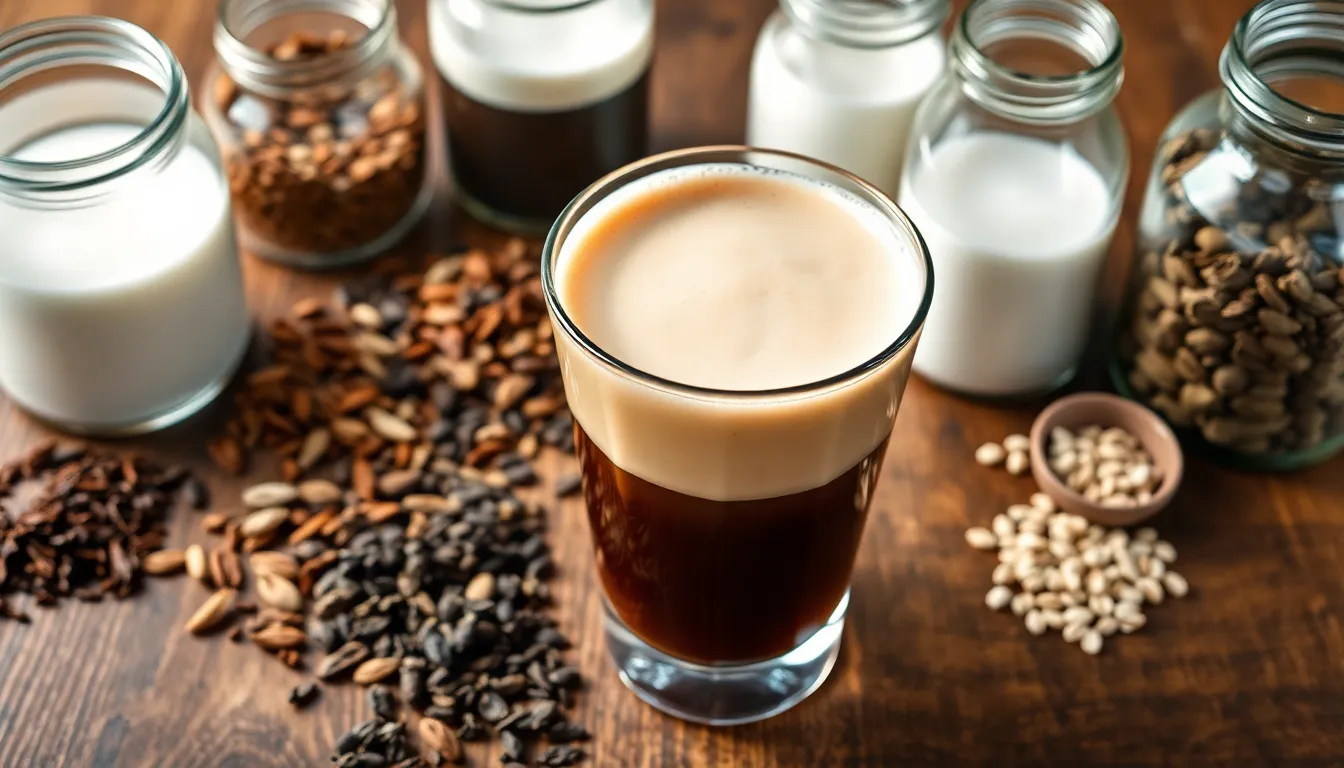
We’ve discovered that mastering a few key techniques transforms ordinary milk tea into an extraordinary beverage. These essential tips ensure consistent results every time you brew.
Choosing the Right Tea
We recommend starting with black tea as your foundation since it provides the robust flavor that defines traditional milk tea. Loose leaf tea or high quality tea bags deliver the best results compared to standard grocery store options. Black tea creates the perfect balance between strength and smoothness that complements milk beautifully.
Green tea and oolong offer excellent alternatives when you want to explore different flavor profiles. Green tea produces a lighter and more delicate milk tea while oolong adds complexity with its partial fermentation. We suggest experimenting with these varieties once you’ve mastered the basic black tea version.
Milk Options and Ratios
Whole milk remains our preferred choice because it creates the ideal creamy texture that milk tea lovers expect. We follow a standard ratio of 1 part milk to 3 parts tea though you can adjust this proportion based on your taste preferences. This ratio provides the perfect balance between tea flavor and creaminess.
| Milk Type | Texture | Flavor Impact |
|---|---|---|
| Whole Milk | Rich and creamy | Neutral, enhances tea |
| Almond Milk | Light and smooth | Nutty undertones |
| Oat Milk | Creamy and thick | Subtle sweetness |
| Cashew Milk | Smooth and rich | Mild nuttiness |
Dairy free alternatives like almond milk, oat milk, and cashew milk work wonderfully for those avoiding dairy products. We avoid coconut milk since its strong flavor can overpower the delicate tea notes. Heavy cream adds richness when you want an indulgent treat though it’s completely optional.
Temperature Control
Boiling water at approximately 212°F (100°C) extracts the maximum flavor from black tea leaves. We steep the tea for exactly 5 minutes to achieve optimal strength without introducing bitterness that longer steeping can cause. Fresh filtered water enhances the overall taste by eliminating chlorine and other impurities.
Serving temperature significantly impacts your milk tea experience. Hot milk tea warms you from within while cold versions provide refreshing satisfaction. When preparing iced milk tea, we always cool the brewed tea completely before adding milk and ice to prevent curdling and maintain smooth texture throughout.
Storage and Reheating Instructions
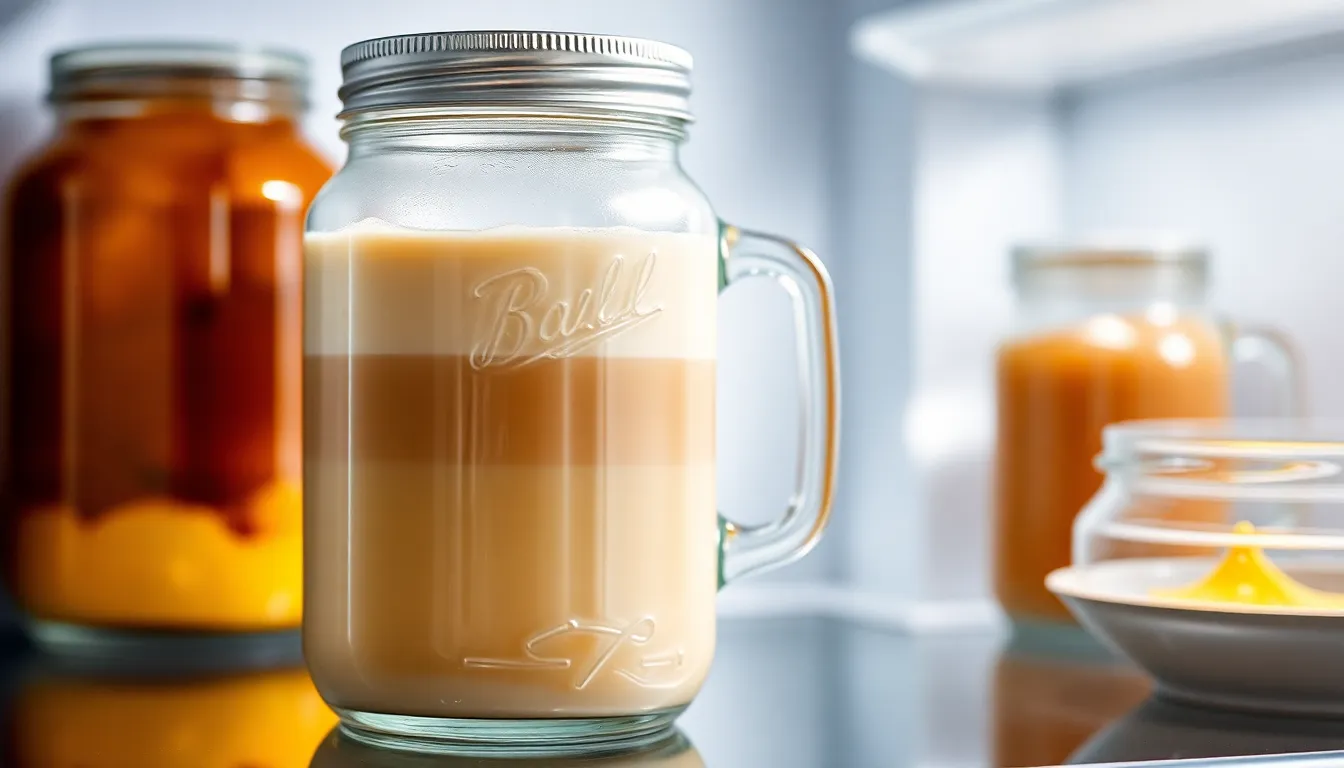
We recommend storing your freshly made milk tea in the refrigerator for optimal freshness and safety. Your homemade milk tea will maintain its quality for up to 24 hours when properly refrigerated in an airtight container.
Proper Storage Methods
Place your milk tea in a glass jar or sealed container immediately after preparation to preserve its rich flavor profile. We suggest avoiding plastic containers as they can absorb odors that may affect the taste of your delicate tea blend. Store the container in the main compartment of your refrigerator rather than the door to maintain consistent temperature.
Reheating Guidelines
Gentle warming preserves the smooth texture and prevents the milk from separating or curdling. We recommend transferring your chilled milk tea to a small saucepan and heating it over low heat while stirring continuously. Monitor the temperature carefully and remove from heat once steam begins to rise from the surface.
Microwave reheating requires extra caution to avoid overheating. Heat your milk tea in 30 second intervals at medium power while stirring between each interval. This method ensures even heating and prevents the formation of a skin on top of your beverage.
Temperature Guidelines
| Storage Method | Temperature | Duration |
|---|---|---|
| Refrigerator | 35-40°F (2-4°C) | Up to 24 hours |
| Reheating Temperature | 140-160°F (60-71°C) | Until steaming |
Never allow your milk tea to reach boiling point during the reheating process as this will alter the delicate balance of flavors and create an unpleasant texture. We find that reheated milk tea tastes best when warmed to just below the original serving temperature.
Quality Indicators
Fresh milk tea should maintain its creamy consistency and rich aroma after proper storage. Discard any milk tea that develops an off smell or shows signs of separation that cannot be remedied with gentle stirring. Your stored milk tea may appear slightly darker after refrigeration but this color change is completely normal and indicates proper tea extraction.
Serving Suggestions
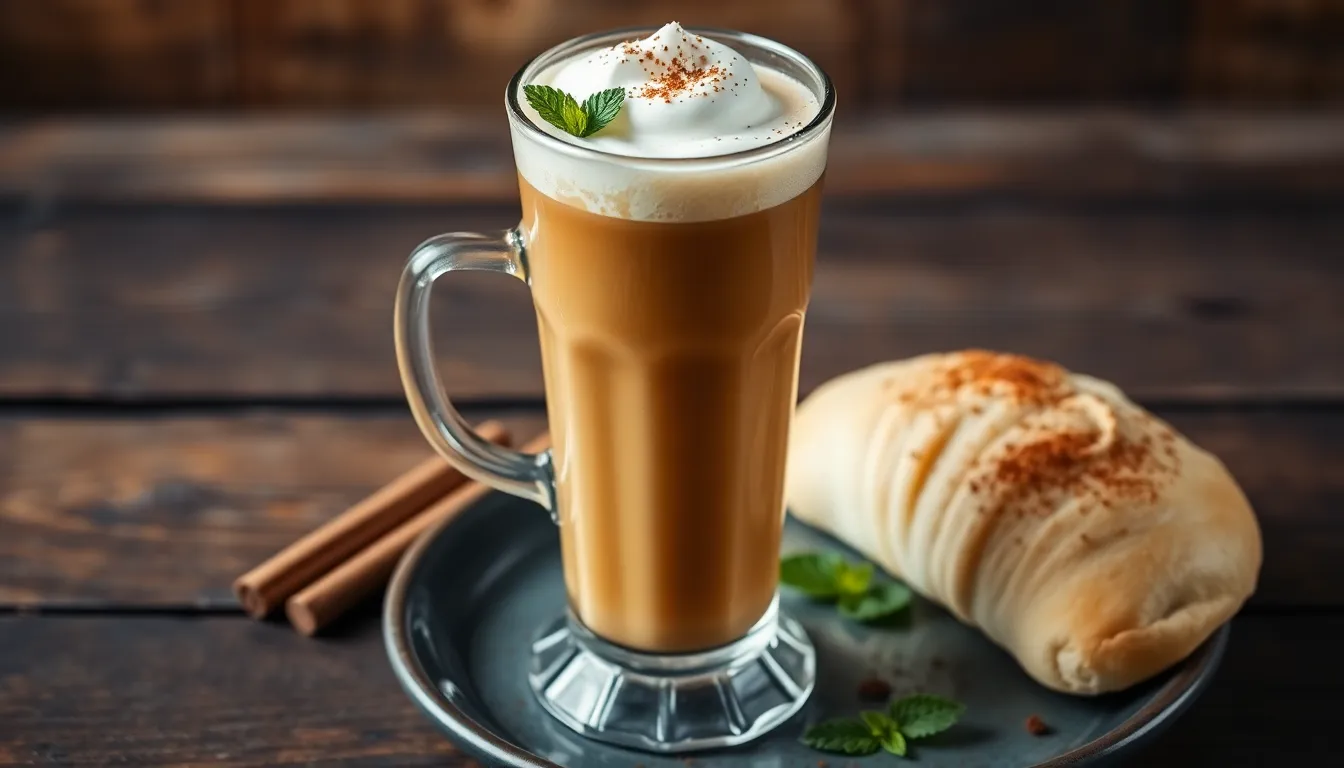
Transform your homemade milk tea into an elevated beverage experience with these thoughtful presentation and pairing ideas. We recommend serving your milk tea in tall glasses to capture the authentic bubble tea shop aesthetic even without the pearls.
Glassware and Presentation
Tall clear glasses showcase the beautiful caramel color of your milk tea while wide straws add an authentic touch to the drinking experience. Glass mugs work wonderfully for hot versions while mason jars create a trendy café vibe for cold servings. We suggest chilling your glasses in the freezer for 10 minutes before serving cold milk tea to maintain the perfect temperature longer.
Temperature Variations
Cold milk tea becomes refreshing when served over ice cubes with a light whipped cream topping that blends smoothly into the drink. Hot versions pair beautifully with a dollop of frothed milk or a sprinkle of cinnamon for cozy afternoon moments. Room temperature serving allows all the flavors to meld perfectly without the distraction of extreme temperatures.
Flavor Enhancement Options
Vanilla syrup adds a sweet aromatic note that complements the tea base without overpowering it. Caramel syrup creates a rich dessert-like experience that pairs especially well with black tea varieties. We find that a light drizzle on top creates visual appeal while stirring it in provides consistent sweetness throughout.
Perfect Pairings
Light pastries such as croissants or Danish complement the creamy richness without competing for attention. Asian-inspired snacks like sesame cookies or almond cakes create an authentic tea house experience. Fresh fruit like strawberries or mango slices add natural sweetness and vibrant color contrast to your serving presentation.
Garnish Ideas
A pinch of ground cinnamon dusted on top adds warmth and visual interest to any milk tea variety. Edible flowers like lavender or rose petals create an Instagram-worthy presentation for special occasions. We recommend a small sprig of fresh mint for green milk tea variations to enhance the herbal notes naturally.
Conclusion
Making milk tea without boba isn’t just possible—it’s absolutely delicious. We’ve shown you that with basic ingredients and simple techniques you can create a creamy satisfying beverage that rivals any tea shop version.
The beauty of homemade milk tea lies in its flexibility. Whether you prefer the robust flavor of classic black tea or want to experiment with Earl Grey and chai variations you’re in complete control of every element.
Don’t let the absence of boba pearls stop you from enjoying this comforting drink. With proper storage techniques and creative serving suggestions you can make milk tea a regular part of your routine. Start brewing today and discover just how rewarding this simple pleasure can be.
Frequently Asked Questions
What ingredients do I need to make milk tea at home?
You’ll need black tea bags or loose tea, water, whole milk (or heavy cream), evaporated milk, and sweetened condensed milk. Optional additions include spices like cinnamon and cardamom, sweeteners such as brown sugar or honey, vanilla extract, and a pinch of salt. Ice cubes are needed if serving cold.
What equipment is required to make homemade milk tea?
The essential equipment includes a kettle or pot for boiling water, a tea infuser or strainer for loose tea, measuring cups and spoons, and a whisk for smooth mixing. Most people already have these items in their kitchen, making milk tea preparation accessible and straightforward.
How long should I steep the tea for optimal flavor?
Steep black tea for exactly 5 minutes to achieve a robust flavor that won’t be overpowered by the milk. This timing ensures proper extraction of tea compounds while avoiding bitterness. Allow the tea to cool before adding milk for the best texture and taste.
Can I use non-dairy milk alternatives for milk tea?
Yes, you can use dairy-free alternatives like almond, oat, or cashew milk. While whole milk is preferred for its creamy texture and rich flavor, non-dairy options work well and create unique flavor profiles. Adjust the ratio based on your taste preferences and desired creaminess.
What’s the ideal milk-to-tea ratio for creamy milk tea?
The standard ratio is 1 part milk to 3 parts tea, but you can adjust this based on your preference. For a creamier texture, increase the milk ratio or add heavy cream. Start with the basic ratio and modify until you achieve your desired taste and consistency.
How should I store leftover milk tea?
Store homemade milk tea in an airtight container in the refrigerator for up to 24 hours. Use glass jars instead of plastic containers to prevent odor absorption. For best quality, consume within this timeframe to maintain freshness and optimal flavor.
Can I reheat milk tea, and what’s the best method?
Yes, you can reheat milk tea gently using a saucepan over low heat or in the microwave in short intervals. Avoid boiling as it can affect the flavor balance and texture. Stir frequently during reheating to ensure even warming and maintain the creamy consistency.
What are some popular milk tea variations I can try?
Popular variations include Earl Grey Milk Tea for a citrusy aroma, Green Milk Tea for a lighter flavor, and Chai Milk Tea with warming spices like cinnamon and cardamom. Each follows similar preparation methods while offering unique taste profiles to explore.
How can I enhance the presentation of my milk tea?
Serve in tall clear glasses to showcase the caramel color, use wide straws for authenticity, and consider garnishes like ground cinnamon, edible flowers, or fresh mint. Top cold versions with whipped cream or hot versions with frothed milk for added appeal.
What foods pair well with homemade milk tea?
Light pastries, cookies, and fresh fruit complement milk tea perfectly. The creamy, sweet beverage balances well with delicate baked goods and provides a satisfying contrast to fresh fruit flavors. Consider the tea’s richness when selecting accompaniments.

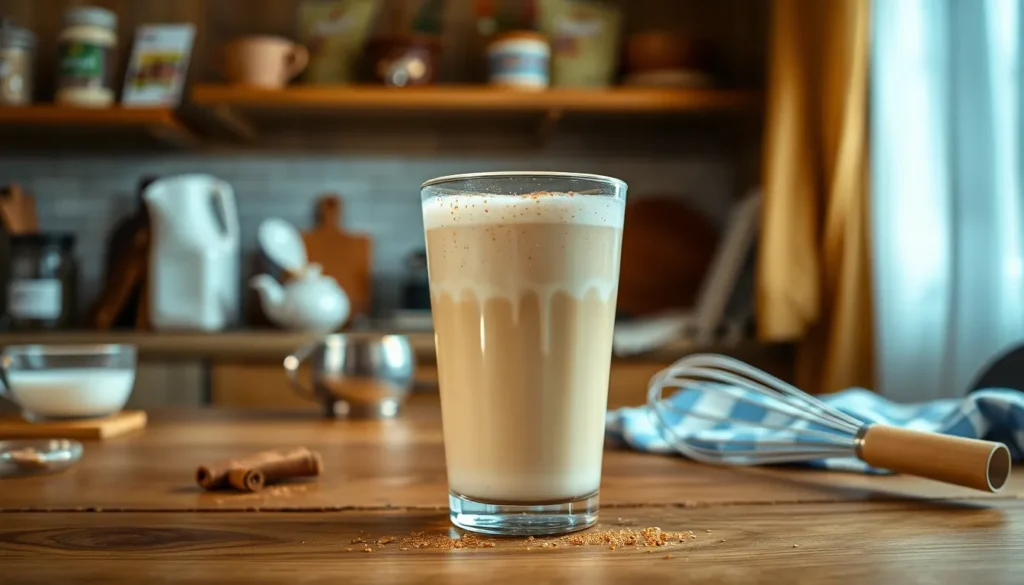





![Milk Tea Mix by Angel Specialty Products [3 LB]](https://m.media-amazon.com/images/I/41XTvRLRZgL._SL500_.jpg)

